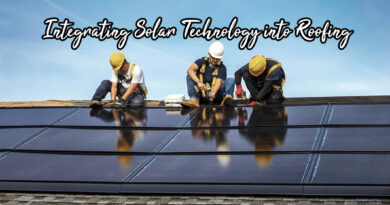How Sustainable Materials Contribute to Energy Efficiency in Buildings
The drive for sustainability has never been more critical, especially in building design and construction. With energy costs rising and environmental impacts under scrutiny, sustainable materials have emerged as a game-changing solution. But their benefits go beyond reducing carbon footprints—they also enhance energy efficiency, significantly lowering utility bills over time.
From architects crafting eco-friendly designs to homeowners hoping to integrate green solutions, understanding the potential of sustainable materials is essential. This article explores how sustainable materials contribute to energy-efficient buildings, offering practical insights for architects, builders, and green-building enthusiasts alike.

What Are Sustainable Materials?
Sustainable materials are those that are responsibly sourced, renewable, and have a minimal environmental impact during their lifecycle. Examples include bamboo, recycled steel, reclaimed wood, and insulation made from natural fibers like wool. These materials not only reduce strain on Earth’s resources but also contribute to energy efficiency when used in building structures.

The Energy-Efficiency Edge of Sustainable Materials
1. Superior Insulation Properties
One of the easiest ways to cut energy costs is to improve insulation, and sustainable materials are leading the way. Materials such as wool, cellulose, and cork excel in thermal insulation, significantly reducing the need for high-powered HVAC systems.
For example:
- Wool insulation helps maintain consistent indoor temperatures, keeping spaces warm in winter and cool in summer.
- Hempcrete, a popular bio-composite made from hemp fibers, offers both insulation and excellent thermal mass.
2. Enhanced Solar Reflectivity
Certain materials, like reflective roofing or metal panels, help bounce sunlight away from buildings, reducing heat absorption. Metal roofing combined with the right fasteners like metal roofing screws ensures durability while improving energy efficiency. Additionally, using high-quality roofing fasteners ensures a tight, long-lasting seal, critical for preventing energy loss.
3. Low Thermal Conductivity
Sustainable materials like lightweight concrete, bamboo, and straw bales are known for their low thermal conductivity. This property ensures minimal heat transfer, stabilizing indoor temperatures and reducing the workload on heating and cooling appliances.
4. Energy-Efficient Windows and Glass
Windows are among the largest sources of energy loss in buildings. Triple-glazed or recycled glass windows, designed with sustainable principles in mind, offer better insulation. Their ability to trap heat in cold months and block excess heat during summer makes them an energy-efficient choice for modern structures.

Applications of Sustainable Materials in Key Building Areas
1. Walls and Insulation
Walls are a building’s primary thermal barrier. Materials like insulated concrete blocks, reclaimed timber, and even straw bales can significantly reduce energy usage. Additionally, natural fiber insulation, such as those made from wool or cork, is gaining traction as a greener alternative to synthetic options.
2. Roofing Systems
Roofing can dramatically impact a building’s energy efficiency. For instance:
- Cool roofs, made from highly reflective materials, reduce heat buildup by reflecting sunlight.
- Metal roofs, when properly installed with durable screws and fasteners, offer sustainability and energy efficiency while standing up to harsh weather conditions.
3. Windows and Facades
Using recycled or energy-efficient glass in windows not only saves energy but also enhances aesthetics. For facades, materials like terracotta cladding or weathered wood add an eco-friendly touch without compromising functionality.
4. Flooring
Bamboo and reclaimed hardwood are two sustainable flooring options that provide excellent durability while remaining energy efficient. Both materials are renewable and have low embodied energy—making them perfect for eco-conscious designs.
Why Energy Efficiency Matters
Energy-efficient buildings benefit more than just the environment. They also lead to tangible advantages for property owners, architects, and occupants alike:
- Lower energy bills: Reduced reliance on heating and cooling systems translates to significant cost savings.
- Improved occupant comfort: Proper insulation and stable indoor temperatures ensure a comfortable living or working environment.
- Enhanced property value: Green buildings often command higher resale values due to their sustainability credentials.
- Global impact: Energy-efficient designs help mitigate climate change by lowering overall power consumption and minimizing greenhouse gas emissions.
Combining Sustainable Design with Technology
Sustainable materials become even more effective when paired with smart building technologies. For instance:
- Smart thermostats work seamlessly with high-quality insulation to optimize temperature control.
- Solar panels combined with insulated roofing systems can cut energy reliance entirely.
- Advanced monitoring systems track energy use, providing actionable data for further efficiency improvements.
Designing the Future, Sustainably
Building design is evolving, and sustainability is no longer an optional feature. For architects, builders, and everyday homeowners invested in creating greener spaces, integrating sustainable materials is a crucial first step toward energy efficiency.
From insulated concrete walls to metal roofing systems secured with high-quality screws, every choice has the potential to enhance efficiency while creating a lasting positive impact. Take the leap by incorporating sustainable materials into your next project—because a greener future starts with what we build today.


